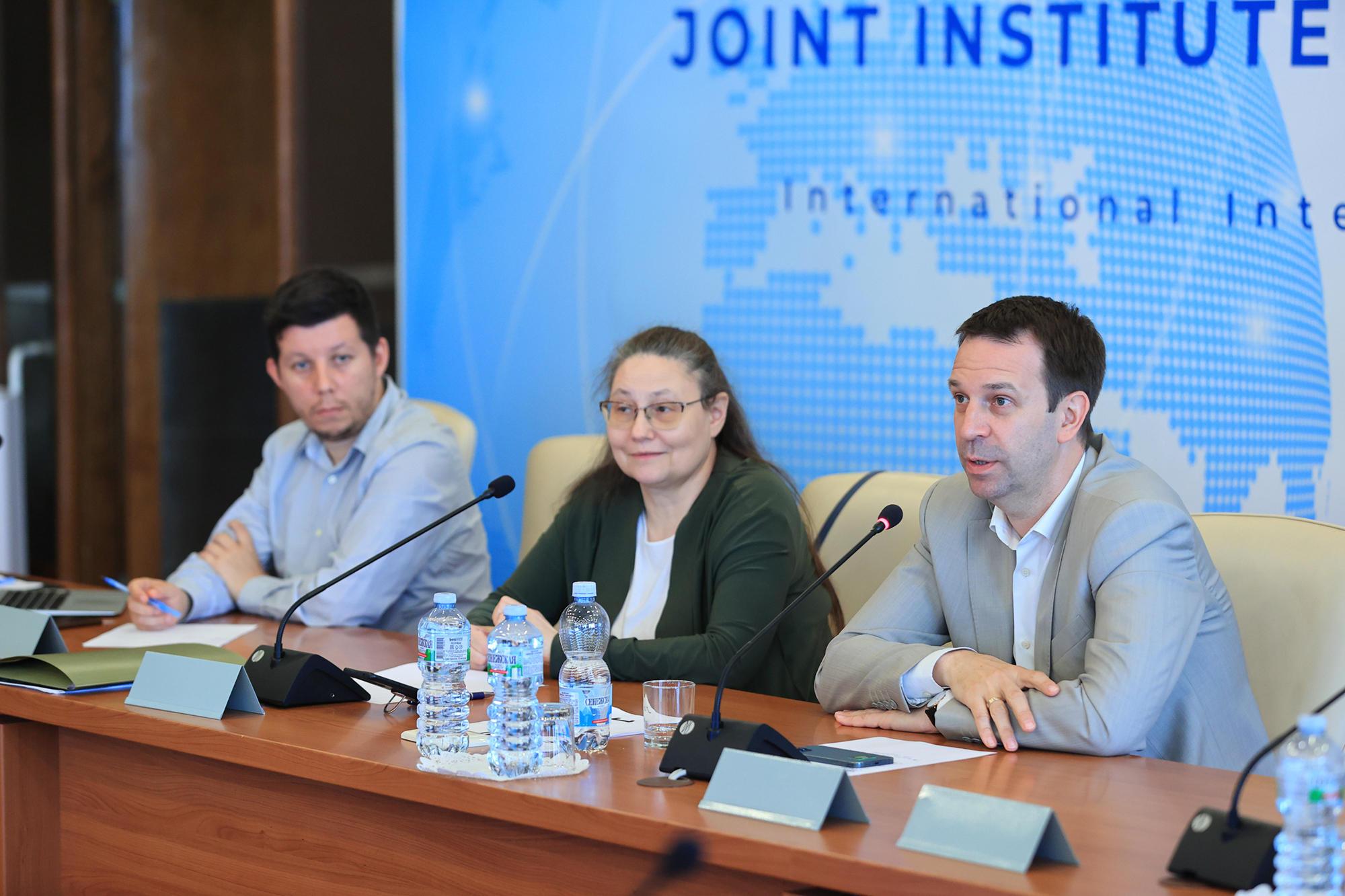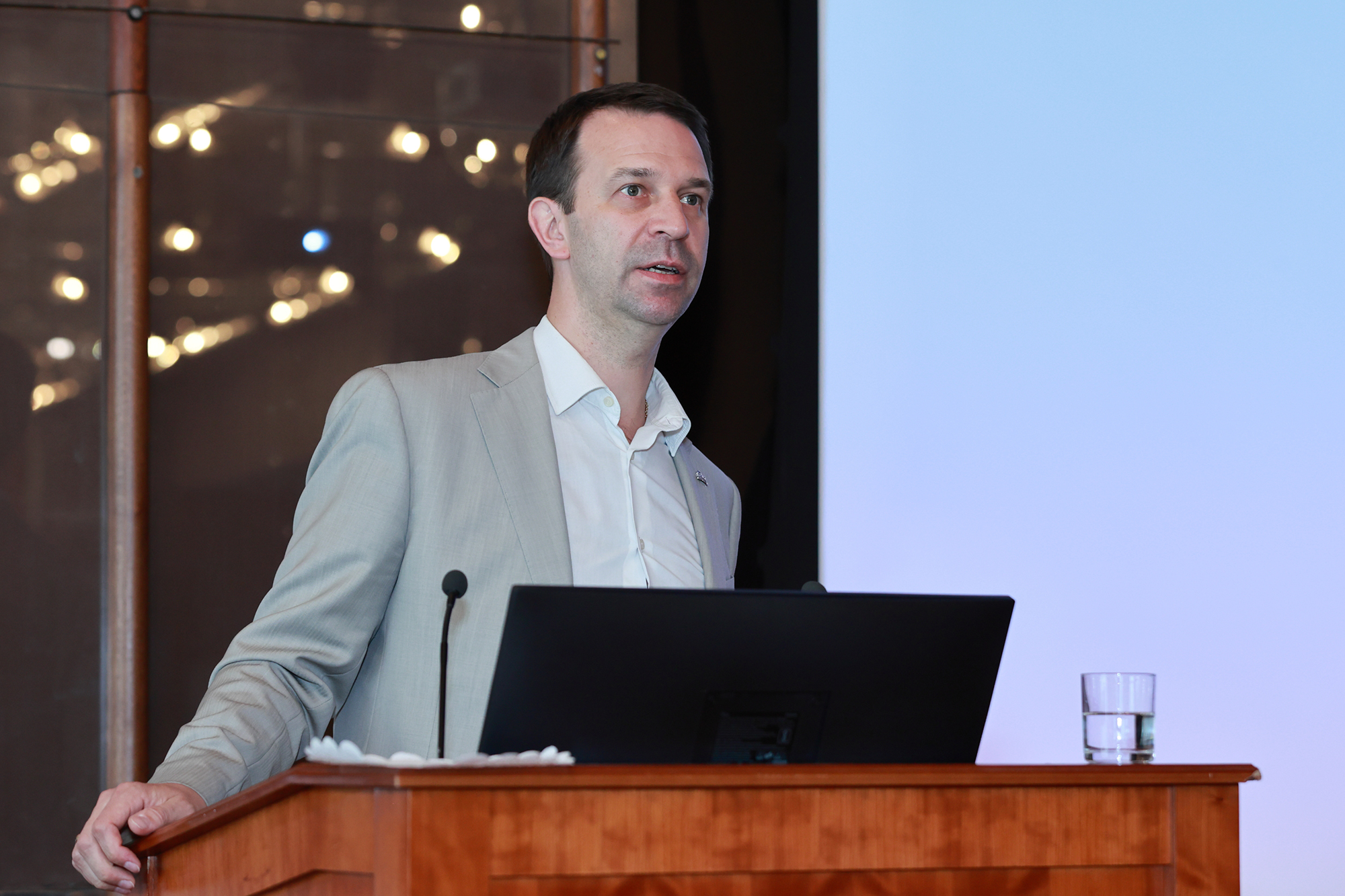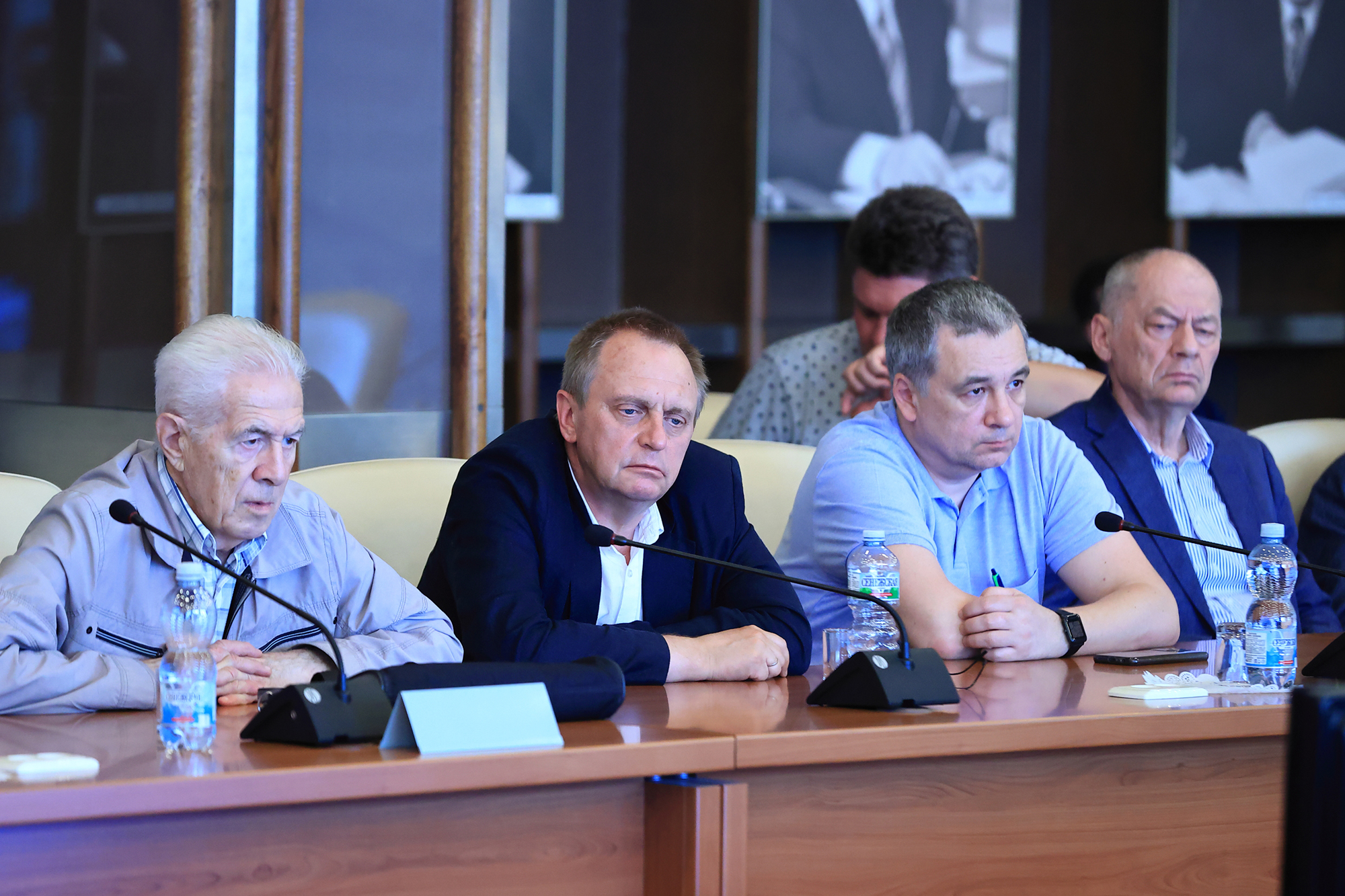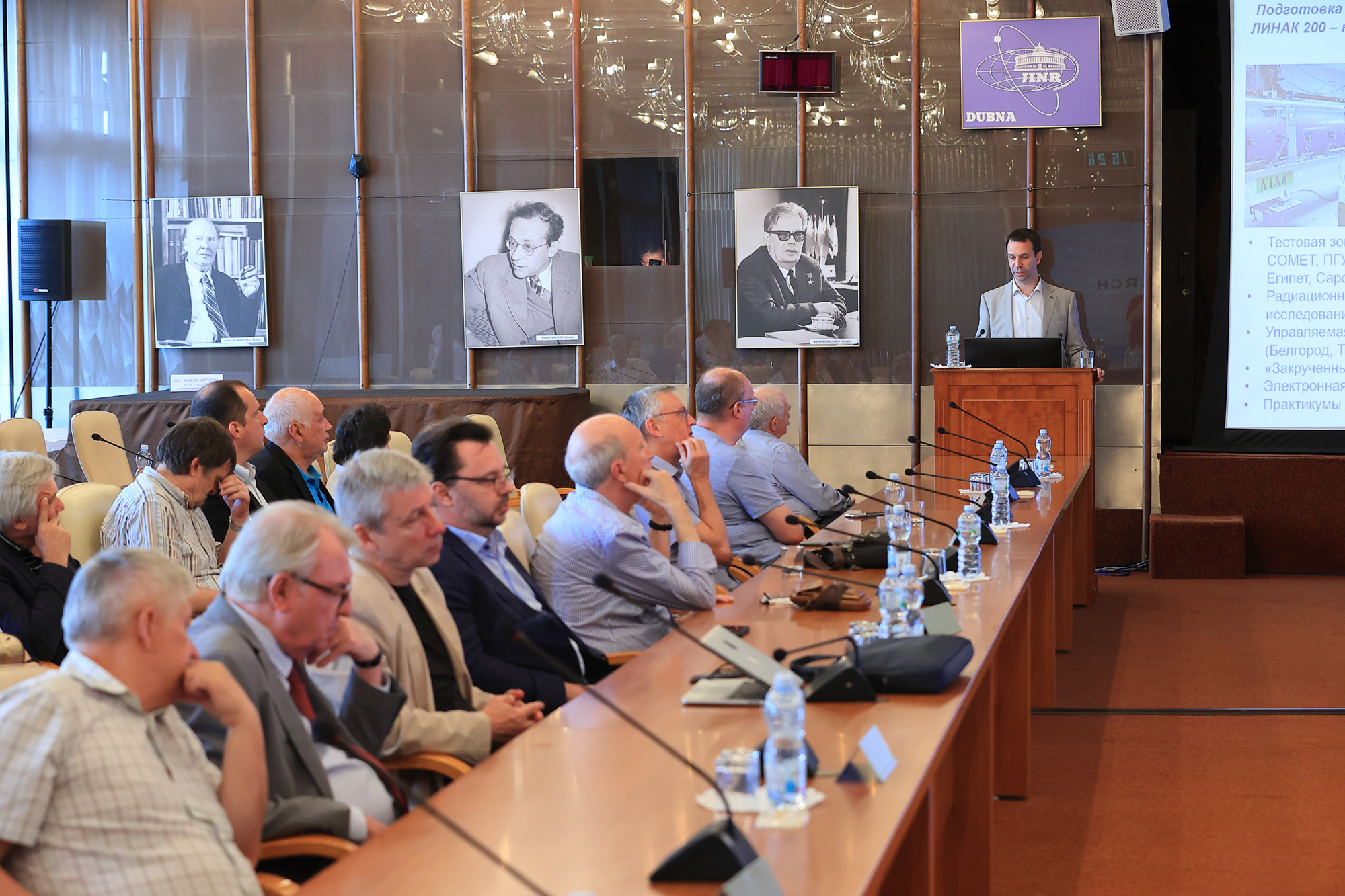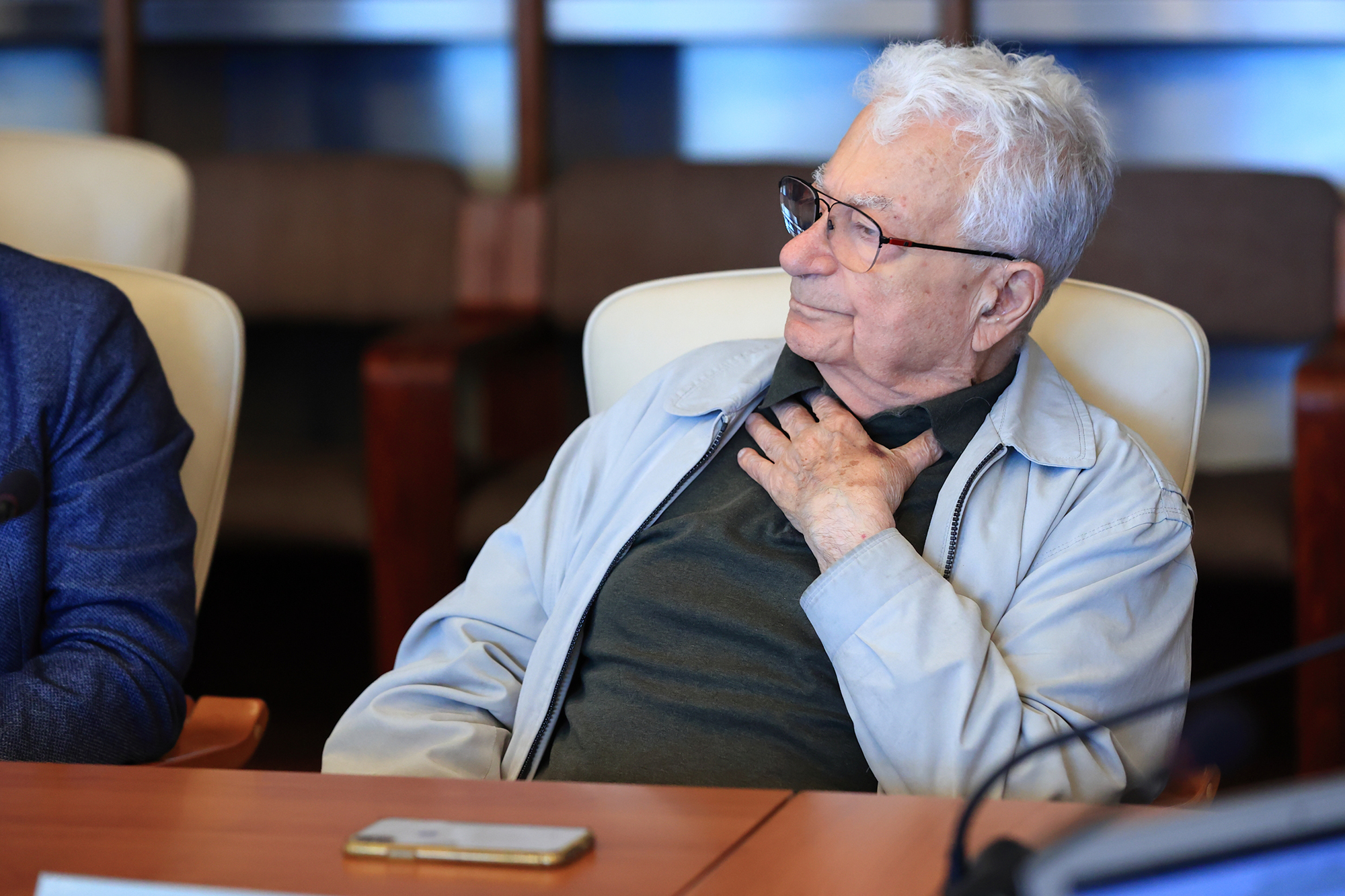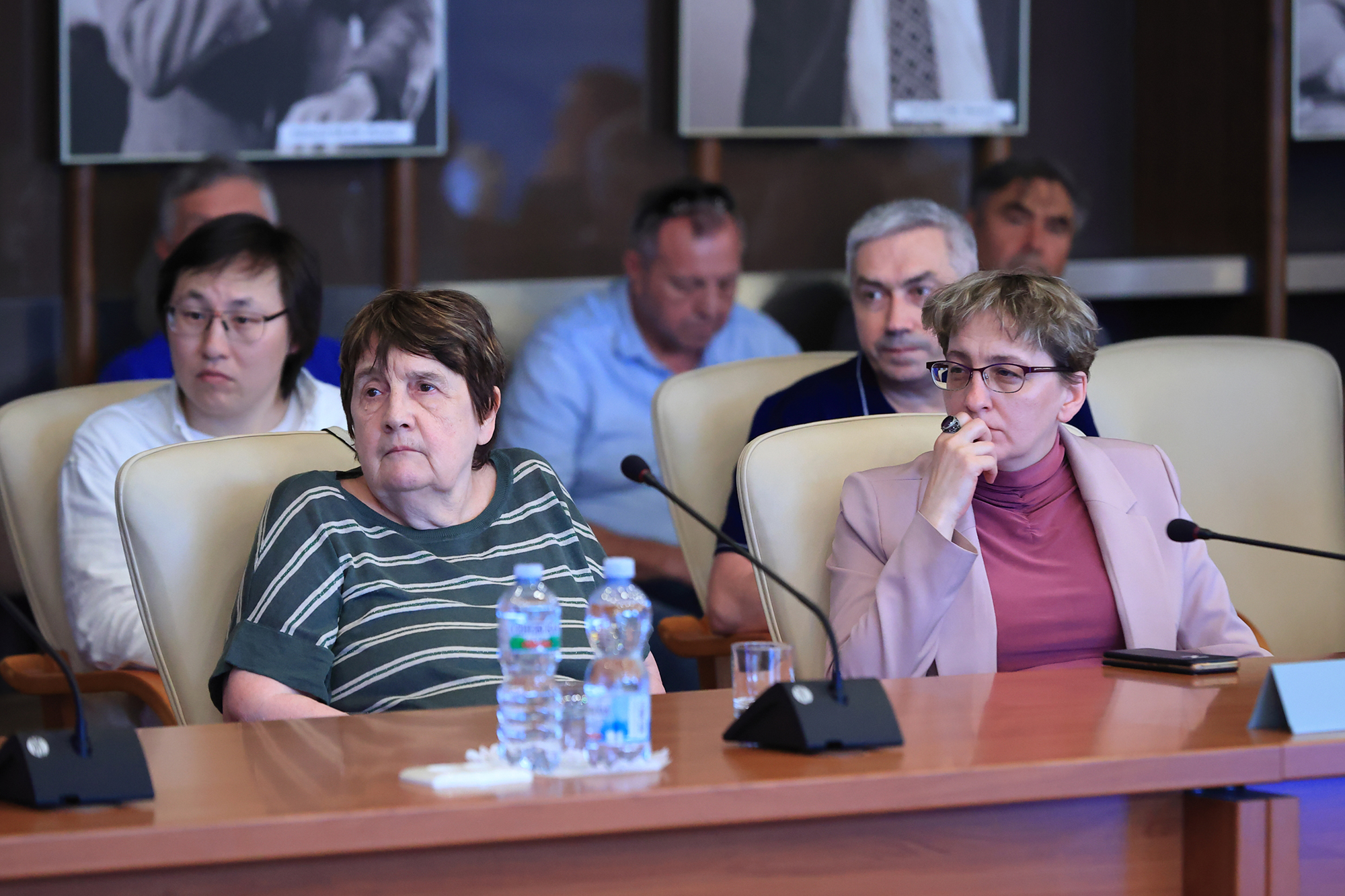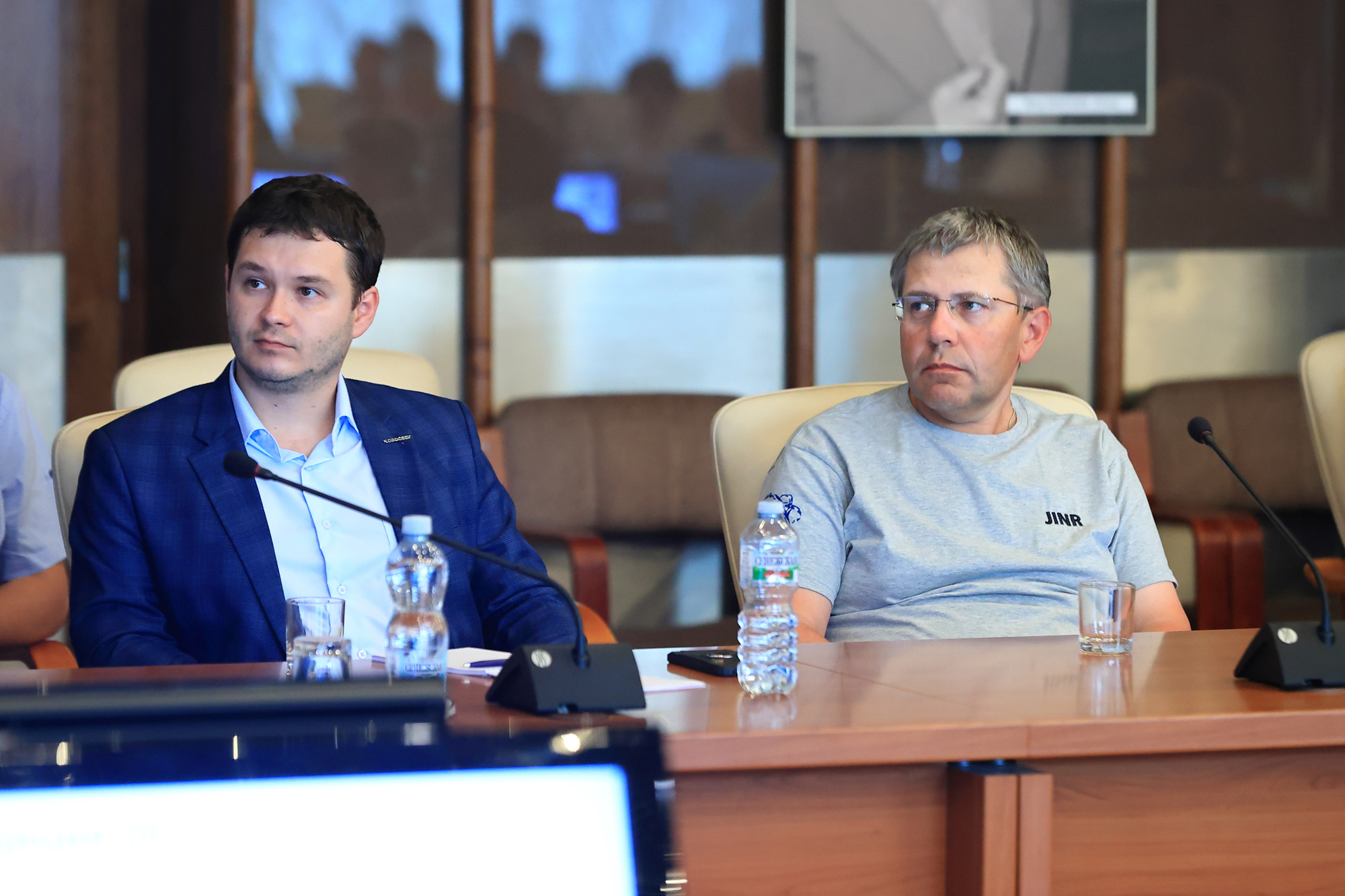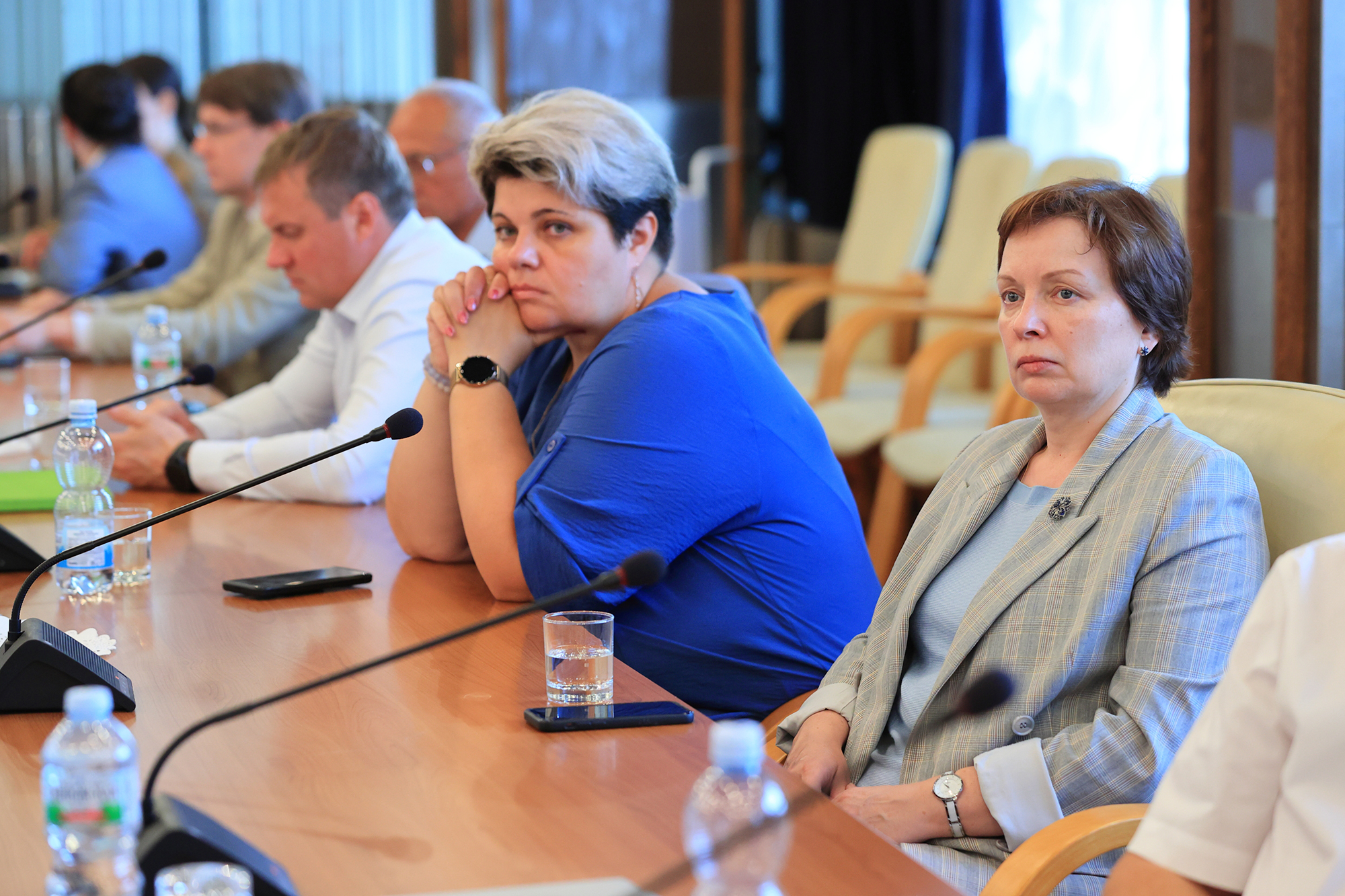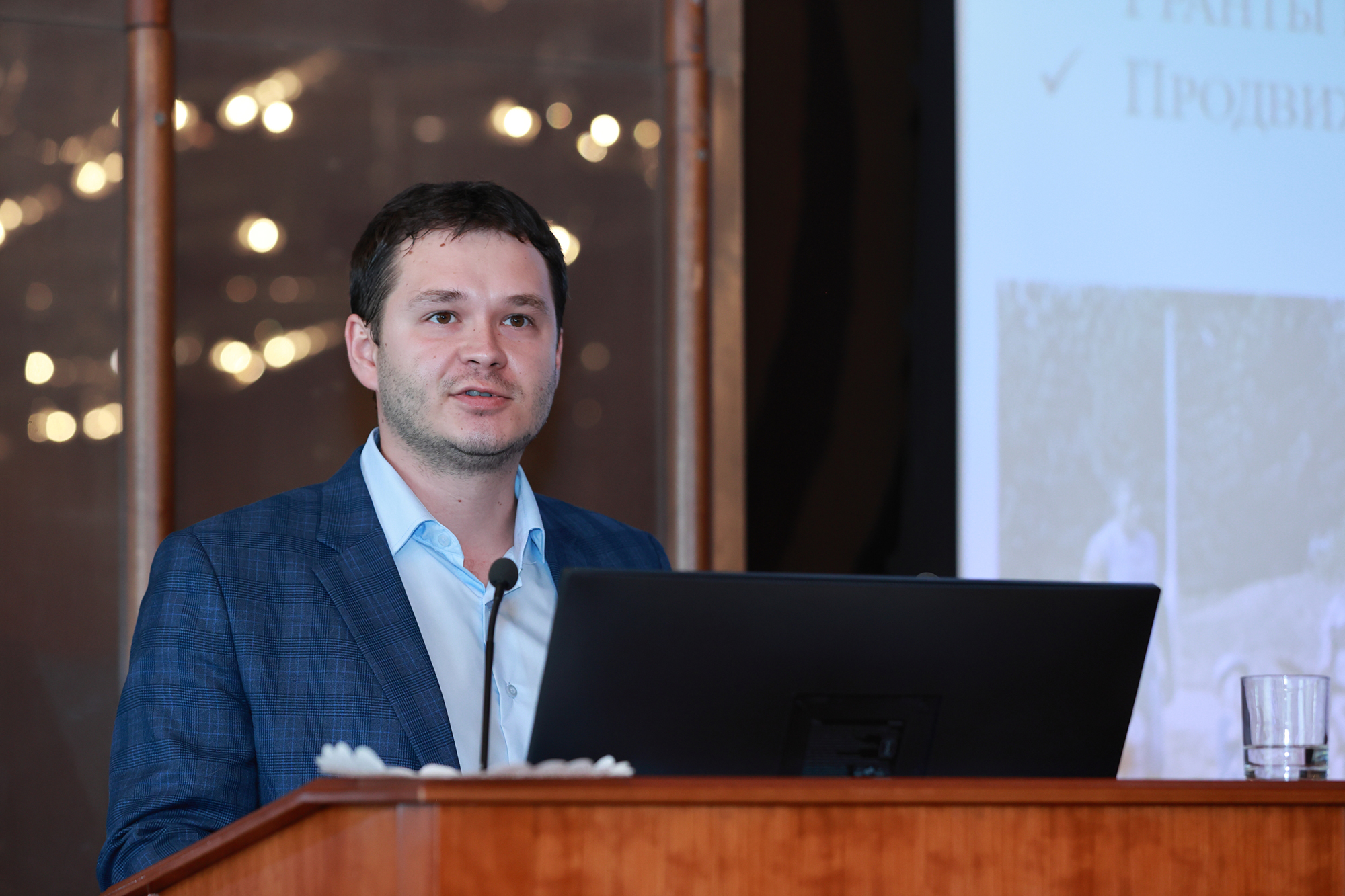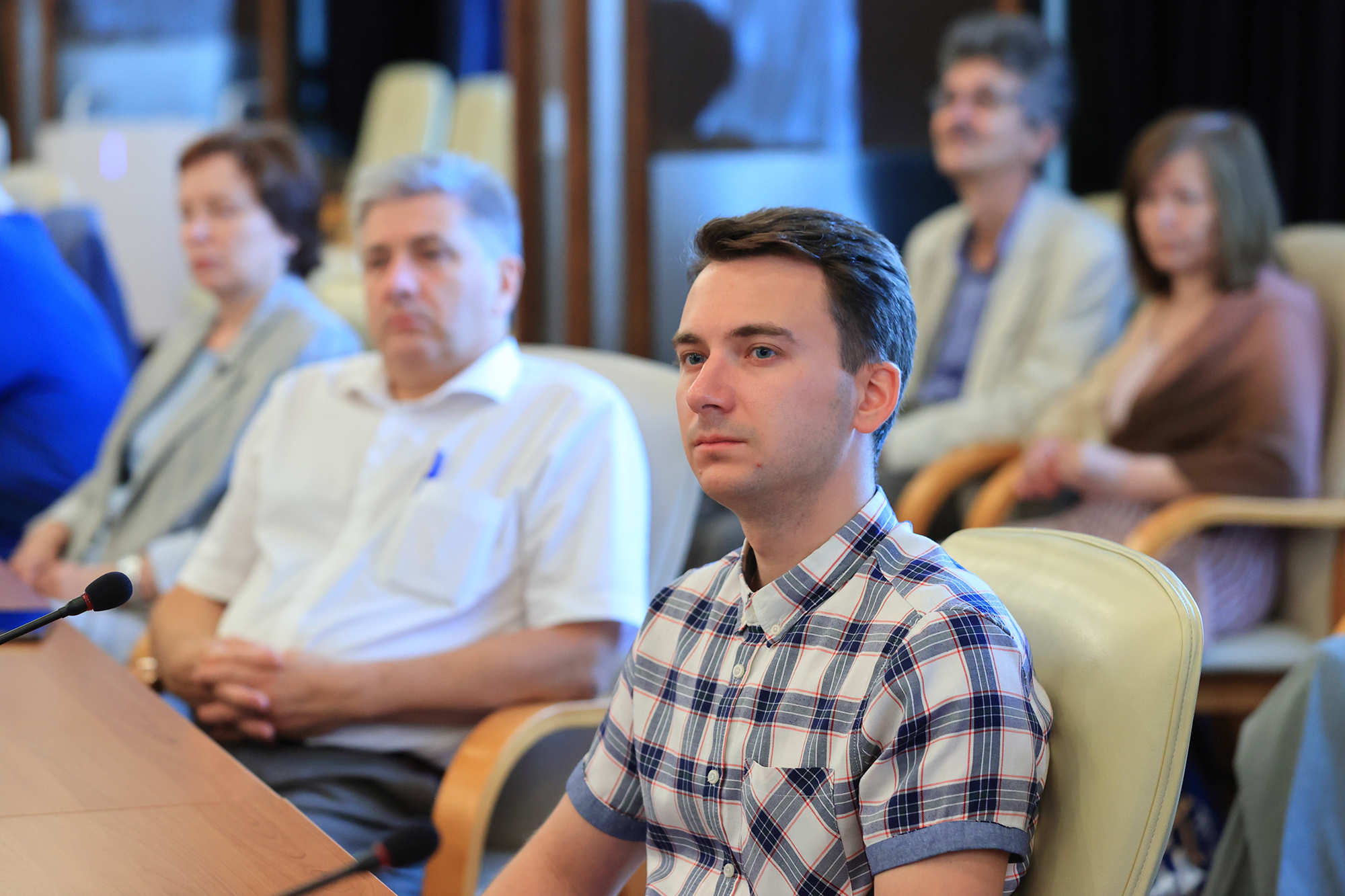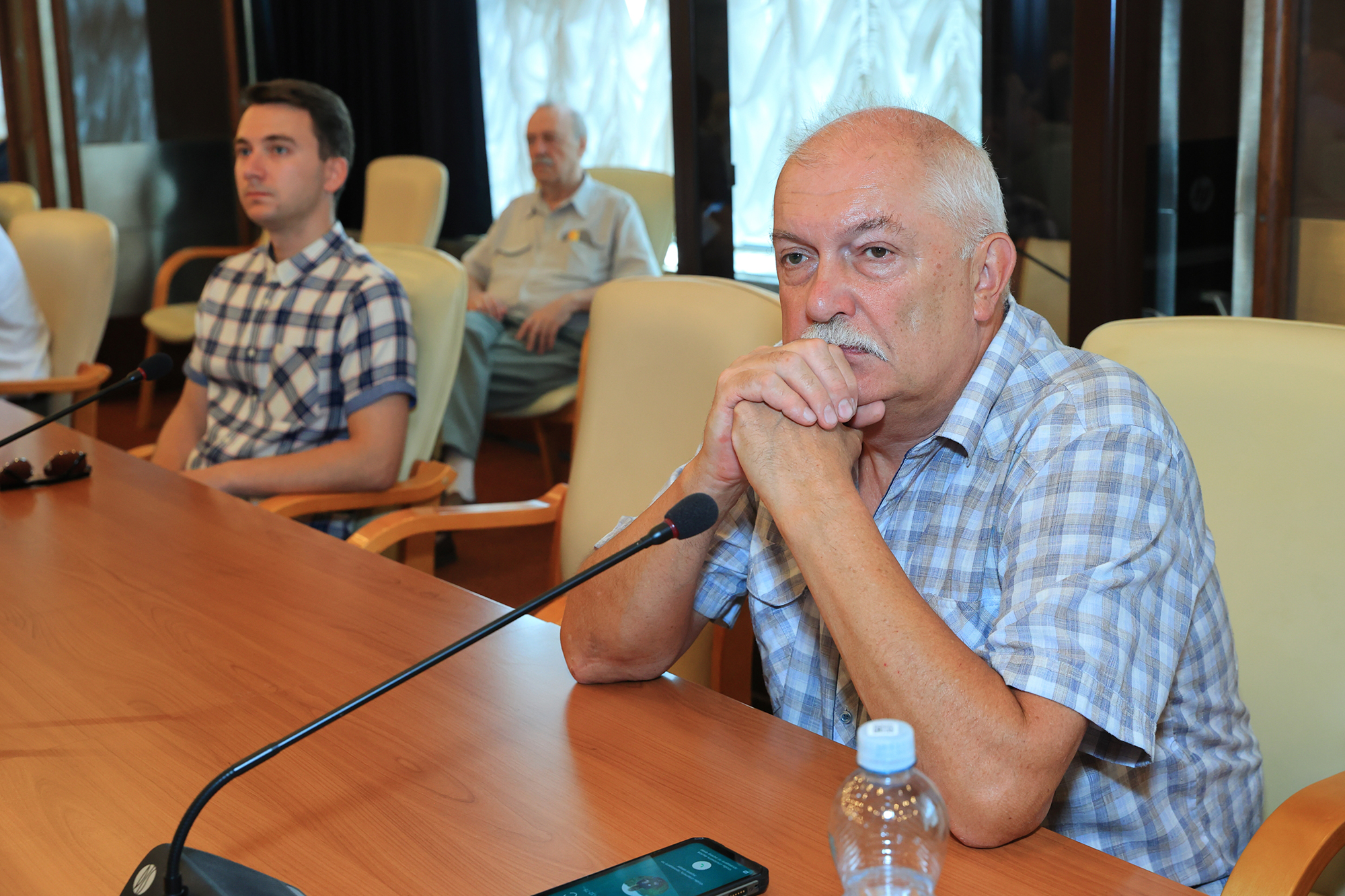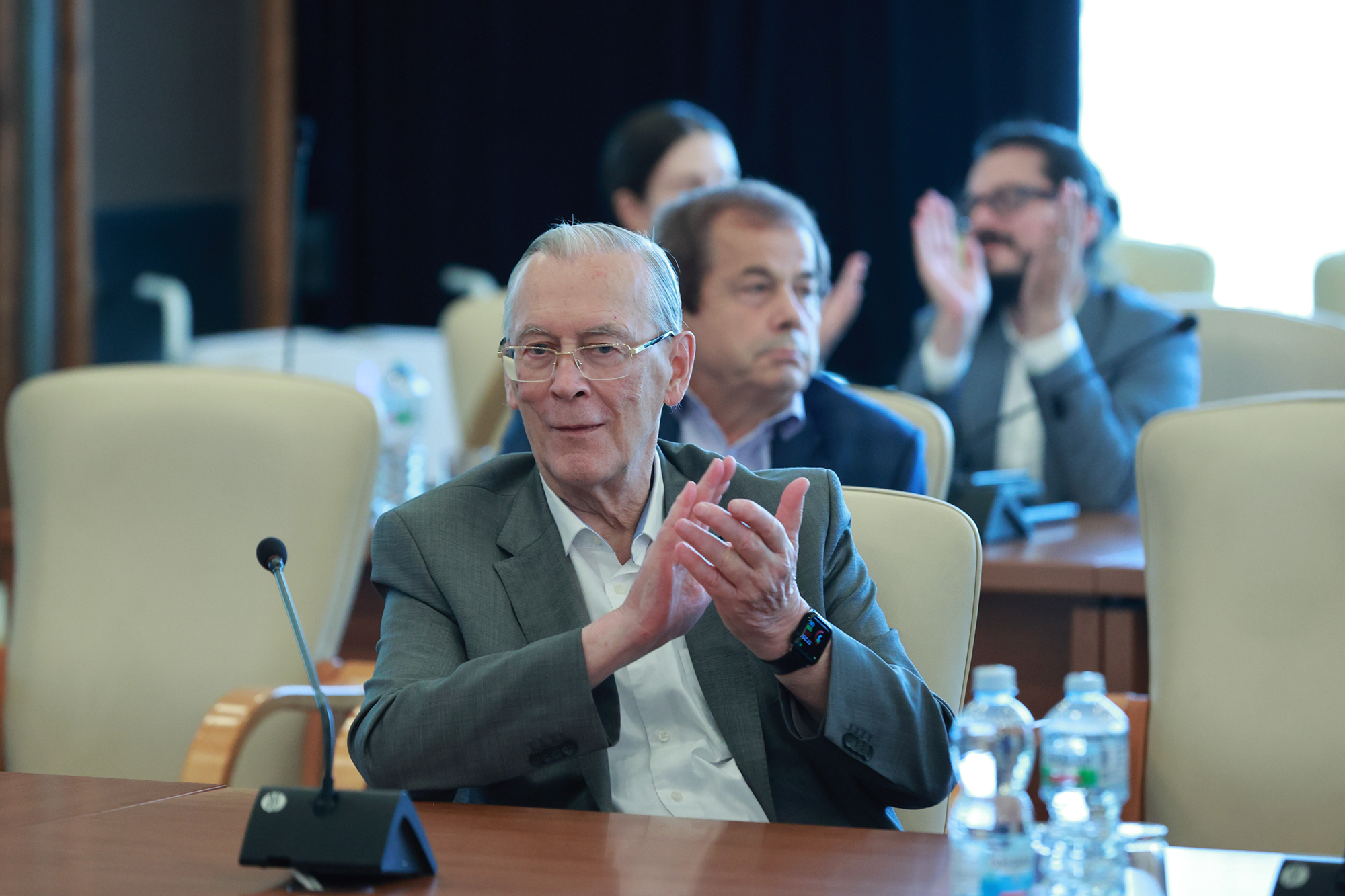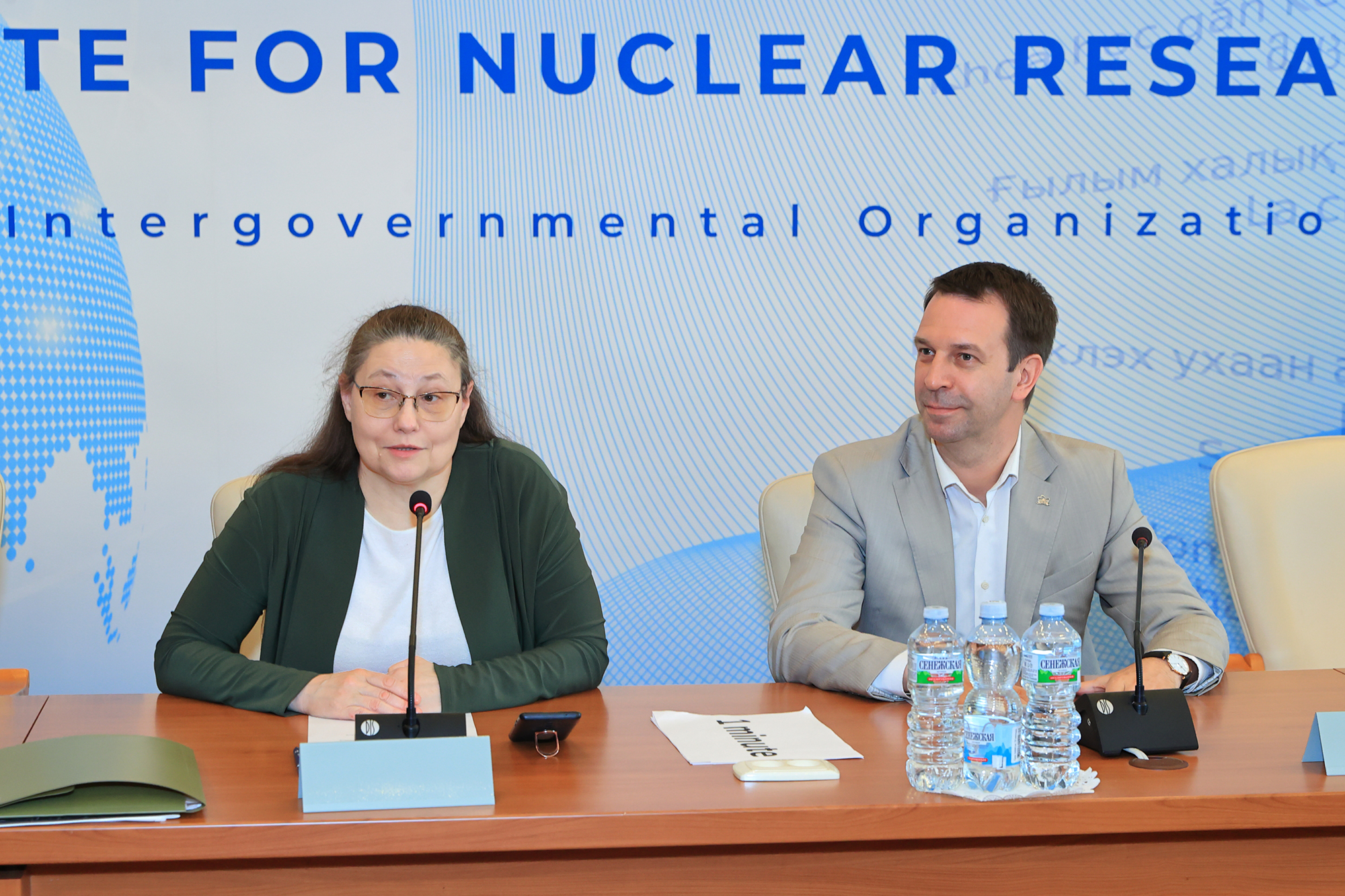STC JINR reviewed results of Institute’s work for half a year and report by youth organization
News, 06 July 2023
On 5 July, a meeting of the Science and Technology Council of JINR was held chaired by Elena Kolganova. The STC Members heard a report by JINR Director Grigory Trubnikov on the results of the Institute’s activities for the first half of 2023. They also reviewed a report on the work of the Association of Young Scientists and Specialists of JINR. The JINR Laboratories have obtained good scientific results. The infrastructure is being updated, work of departments and offices is undergoing optimisation. AYSS is widening the range of its activities and holds new events.
Presenting the overview of the Institute’s results, Grigory Trubnikov noted the relevance of the JINR scientific agenda against the background of the world physical studies. “The International Union of Pure and Applied Physics has published a report with key directions in nuclear physics up to 2030. We see that these fields are priority areas for the Joint Institute, too. JINR develops and builds its scientific programme synchronously and coherently with world-leading laboratories,” Grigory Trubnikov highlighted.
A significant result is achieved in the field of theoretical physics. BLTP JINR scientists have presented a new dynamic mechanism of incomplete nuclear fusion. This work by Dubna theoreticians has been published in the prestigious journal Physics Letter B.
Active works are underway within the NICA Megascience Project. General construction is almost completed, the construction of the collider’s building is coming to an end. Participants of the project focus on completion of equipment deliveries. During the longest in the complex history commissioning run, the BM@N Experiment started its physical programme and collected more than half a billion events. The MLIT JINR computing infrastructure was for the first time used to reconstruct the raw experimental data of this experiment. An article about their analysis has been sent to the prestigious journal JHEP. The ARIADNA programme of applied studies at NICA has begun.
The Laboratory of Nuclear Reactions continues experiments at the Superheavy Element Factory. New isotopes have been produced. For the first time the Laboratory’s team has produced isotope 273Ds in the reactions of both cold and hot synthesis. A new DC-140 Accelerator is being installed, and an experimental hall of the U-400R Accelerator for applied research is being built.
During Baikal expedition 2023, the Baikal-GVD Collaboration installed two new clusters of optical modules. Now 12 clusters of the neutrino telescope allow detecting about 10 neutrinos of galactic and extragalactic origin per year. Preparations for the commissioning of the LINAC-200 accelerator are in full swing at DLNP JINR. It will be a new basic facility of the Laboratory.
Maintenance of the IBR-2 Research Reactor is continuing. Resumption of its operation is planned for the autumn 2024 after receiving a license of Rostechnadzor. LRB specialists are studying cytogenetic and behavioural disorders in monkeys long time after radiation exposure with accelerated heavy ions. At MLIT JINR the GPU component of the Govorun Supercomputer has been extended with five new servers each containing eight graphics processors. This provides new opportunities to solve the tasks of machine and deep learning. Jointly with the Department of Digital Services Development, works continue to extend the services provided by the JINR Digital Ecosystem.
Director of the Institute in his report touched upon staff issues and noted that this autumn about 1,200 employees of JINR departments and services would be re-certified. Significant work has been done to syncronise the activities of financial departments of the Institute and self-accounting units. The Department of Science Organization Activities is creating a new architecture of the JINR Topical Plan thus to ensure a clear image of the structure of the Institute’s scientific projects.
Great attention is paid to the development of the assets. The costs of the JINR Hotel and Restaurant Complex have been optimised. Premises of the University Centre and the Publishing Departments have been repaired. Large-scale repairs are underway in the International Conference Centre and the JINR Sports Club. Modernisation of the DLNP and VBLHEP canteens is planned. Major repairs of the Dubna restaurant is awaited, which will take about a year. Repairs and improvement of the Dubna Hotel in Alushta are underway. The development plan for the Ratmino Resort Hotel has been approved. Engineering networks are now being assessed there. The main electrical substation at the VBLHEP site has been modernised and now the reconstruction of the DLNP site’s substation is taking place. At the same time, JINR supports objects of the city social infrastructure, including Medical Unit No.9, where 10 new departments and an advanced vascular centre have opened.
Another large-scale infrastructure object under repairs is the checking point for pedestrians, cyclists, and cars at the DLNP site. Opening of the checking point for pedestrians and bicycles is preliminarily awaited in September. By the end of the year, it is planned to finish reconstruction of the checking point for cars, which will have two lanes. Repairs of engineering networks at the VBLHEP checking point have finished. It is a preparatory step for the construction of a parking for the Laboratory staff’s cars. More than 200 parking slots will be available.
Grigory Trubnikov told the audience about the work of the University Centre and the MSU branch opened in Dubna. He also shared how the JINR activities are being popularised. As for international cooperation, first practical steps are taken to implement two memorandums signed with China and Mexico, new partners of JINR. In the near future, a number of specific joint projects will be ready for consideration by the Joint JINR-China and JINR-Mexico Coordination Committees. Scientific ties with India and Brazil are developing.
A report by Vladislav Rozhkov, Chairperson of the Association of Young Scientists and Specialists of JINR, continued the STC meeting. The Association now has more than 1,000 young employees under 36. In addition to regular events held by AYSS, the Association organized the first school on accelerator physics and technology. The organizers of the event hope that it will become annual, and there is already an application from FLNR for holding such a school next year dedicated to cyclotrons. A number of regular meetings, like AYSS seminars, JINR Cinema Club and others, are organized.
An important issue in the AYSS Chairperson’s report was the update of the Regulations on Youth JINR Prizes and the AYSS Regulations. It was necessary to update and optimise the procedure of holding the Youth JINR Prize Competition for the best scientific and applied works. This is due to the increased number of AYSS scientific conferences serving as independent selection stages of the best scientific works. Moreover, there is no nomination for young employees of JINR departments and offices. It is necessary to change the source of funding for Prizes and increase their size.
For the effective continuation of the functioning of the Association, it is necessary to update the AYSS Regulations. Among the changes offered are an increase in the age of members of the Association up to 35 years, the removal of restrictions on the number of members of the AYSS Council, optimisation of the voting procedure.
In addition, a proposal was made to introduce a unified application form for young JINR scientists when submitting applications for external competitions.
